Lori asked me what I wanted to do while we visited Réunion. I told her I mostly wanted to see the grave of the pirate La Buse. She muttered something disappointedly about “pirates, why pirates …”
“Yo-ho, yo-ho, a pirates life for me,” I sang. She wasn’t entertained.
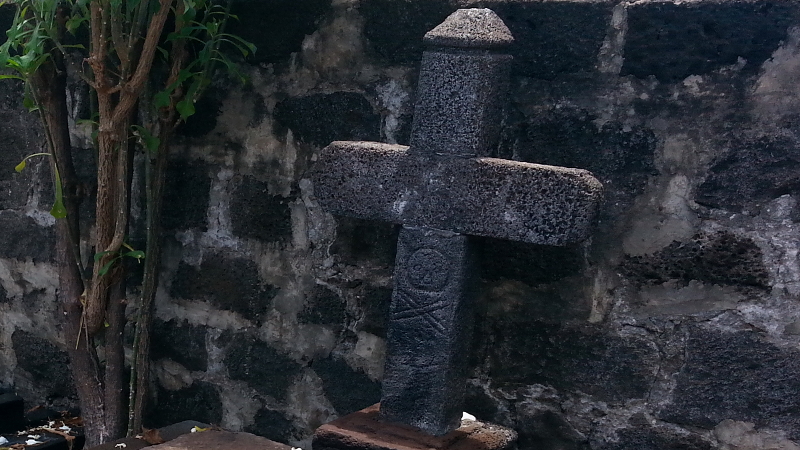
She had a point. Réunion is rich in incredible natural features, fascinating history, superb Creole cuisine, and more. So, why pirates?
Well, not out of admiration or anything. Real pirates, not the Disney-fied, Caribbean kind, were rather ruthless. I’m interested in the Indian Ocean’s pirate story in a “who were they, where did they go, why were they there, what did they really do” sort of way.
Pirates of the Indian Ocean
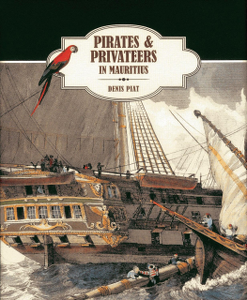
Vasco da Gama was the first European pirate in the Indian Ocean. Historians will say he was a Portuguese explorer and the first European to reach India by sea in 1497. While he and his fleet of four ships and 170 men sailed around Africa and across the Indian Ocean, they looted Arab merchant ships along the way. That pretty much makes them pirates.
About 200 years later in the 1680s, English and Spanish navies began hunting down the pirates in the Caribbean Sea. Some pirates accepted amnesty offered by the English Crown. Many did not and sailed off for the Indian Ocean instead. From 1685 to 1730, there were about 1,000 pirates prowling the Indian Ocean and nearby seas and gulfs.
The pirates set up strongholds in the bays of northeastern Madagascar and on Nosy Boraha, known as Île Sainte Marie to the Europeans. Legend says they even attempted to create a pirate utopia with a democratic government called Libertalia, but pirate experts have yet to find evidence that confirms this story.
Pirate La Buse
The pirate La Buse, given name Olivier Le Vasseur, was a pirate’s pirate. He was born in Calais, France around 1680 and appeared in the historical record in 1714 in cahoots with infamous Caribean pirates Benjamin Hornigold, Edward Teach a.k.a Blackbeard, and Samuel Bellamy. He left for the Indian Ocean in 1718.
Le Vasseur was called La Buse, the Buzzard, because of the speed and efficiency with which he attacked his prey.
He suffered an injury to an eye during his early days as a French privateer over which eventually wore a patch. Yes, a real pirate with a patch over one eye.
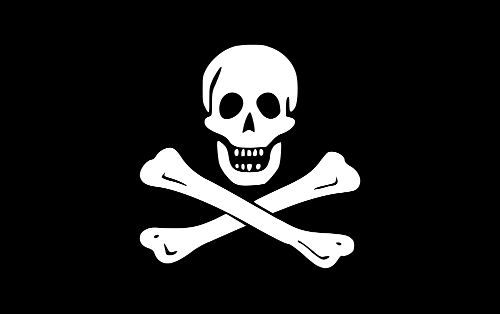
He sailed with pirates John Taylor and Edward England, both of whom flew the Jolly Roger, so it’s likely he attacked under this flag as well. Yes, a real pirate flag.
La Buse frequented the waters of Madagascar, Mauritius, Seychelles, the Mozambique Channel, and Réunion Island. When he wasn’t hunting the seas, he holed up on Île Sainte Marie.
In 1721, La Buse and John Taylor captured the Nossa Senhora do Cabo, a Portuguese treasure ship, in the bay of Saint Paul on Île Bourbon (now called Réunion). They made off with a treasure valued at well over US$400 million in today’s money. Yes, real pirate treasure.
Long after his fellow pirates had retired or been imprisoned or executed, La Buse continued his thieving and adventuring ways. La Buse’s pirate career was likely one of the longest.
The French governor of Île Bourbon made all pirates in the region an offer of general amnesty in 1724. La Buse declined because he would have had to return all his booty.
La Buse was captured in 1730 and imprisoned in the village of Saint Paul on Île Bourbon. He was interrogated, declared guilty of piracy, and condemned to be hanged. While being taken to the gallows in Saint Paul’s public square, La Buse threw a cryptogram into the crowd and shouted, “Find my treasure, ye who may understand it!” Yes, real pirate treasure hidden on an island.
The pirate La Buse’s treasure has yet to be found.
The Wrong Cimetière Marin
Lori reluctantly agreed we could go see the pirate’s grave but on condition that afterwards we moved on to mountains and hiking. Réunion is a tropical island you go to more for the mountains than the beaches.
The guidebook says La Buse is buried in Cimetière Marin in Saint Paul. I looked up directions on my smartphone. The cemetery wasn’t very far away. We drove south from Saint Denis for awhile, exited the highway, and crossed through town to the cemetery.
Where was the pirate? For a tourist destination of some notoriety, the pirate’s last resting place wasn’t signed very well. We walked around reading headstones, and I looked for the pirate.
My daughter Ashley once said she thinks there is a lot of love in cemeteries. This one certainly showed that. The cemetery was clean and mostly painted bright white with cheery flower beds planted on the tombstones above the graves. But there was no pirate.
I started to get an “I’m in the wrong place” feeling. I searched on my app. Apparently, cimetière marin is French for marine or sea cemetery. And, apparently, there are a number of cimetière marin in Réunion. And, clearly, we were in the wrong cimetière marin. I had navigated us to the Cimetière Marin du Port.
We got back in the car and headed to the other cimetière marin in Saint Paul.
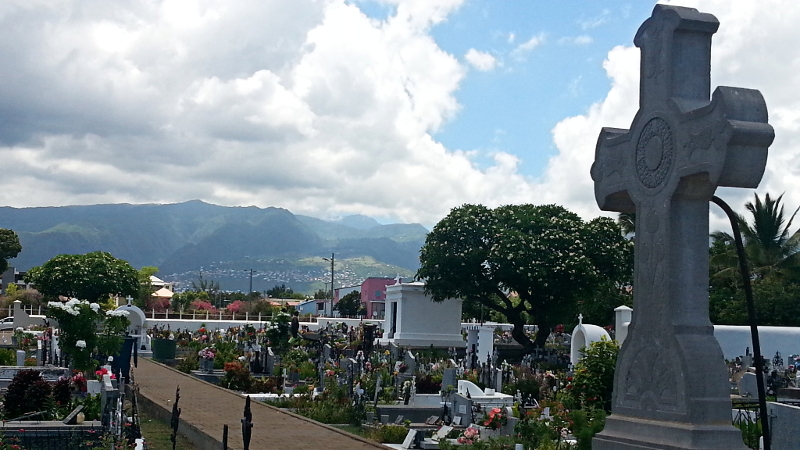
Here Be The Pirate?
After missing a highway exit then figuring out how to get off the highway and back to Saint Paul, we arrived at the correct cemetery, the Cimetière Marin de Saint-Paul. But we onlly sort of found the pirate La Buse.
There is a pirate grave with the Jolly Roger engraved on a stone cross and signs saying this is the tomb of La Buse. There’s also a sign in French posted next to the alleged La Buse tomb. I studied French for two years in high school over some thirty years ago. I do pretty well reading menus in French, but the description on this sign was way beyond me. So, of course, I took a picture of it and typed the French into a translate app on my smartphone.
This and the tourist sign at the entrance to the rest of the story. The Cimetière Marin de Saint-Paul was built in 1788, which is some 58 years after La Buse was executed. After the execution, La Buse’s body was “exhibited at the seaside.” However, “the exact place of his burial remains unknown.” The cemetery was destroyed in 1944 by a cyclone and tidal wave. Later, in the 1970s, the “abandoned cemetery, buried in the sand” was restored and a memorial to the pirate La Buse was installed mainly to attract tourists.
Well, it worked. This tourist was attracted.
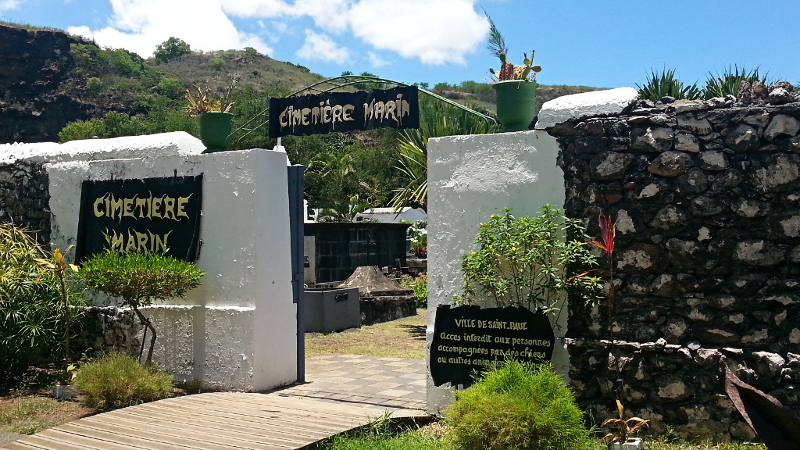

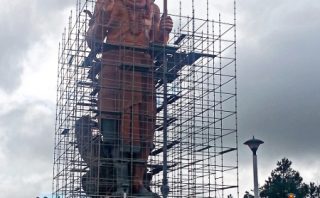
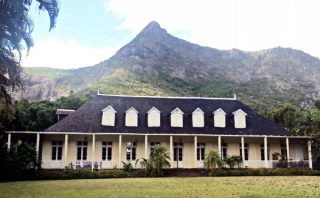




I believe the actual grave of La Buse is in the old cemetery in Port Victoria in Mahe, just off the road leading to Sans Souci, and not the huge cemetery one passes on the way to the airport. Seychelles. I actually photographed it back in 2007. The Seychellois certainly claim it is, and their is definitely an ancient tomb stone with his name on it. In the famous Marie Antoinette restaurant there is a large panel giving details of his life and of course the rumour that his treasure lies in the Seychelles.
Thanks for the info on La Buse in Seychelles. Yes, I read he lived in Seychelles for awhile, as well as Madagascar. The historical record seems pretty clear La Buse was executed on Île Bourbon (Réunion). What happened to his remains is rather obscure. Many believe La Buse’s treasure is somewhere in Seychelles. Pirates, eh?